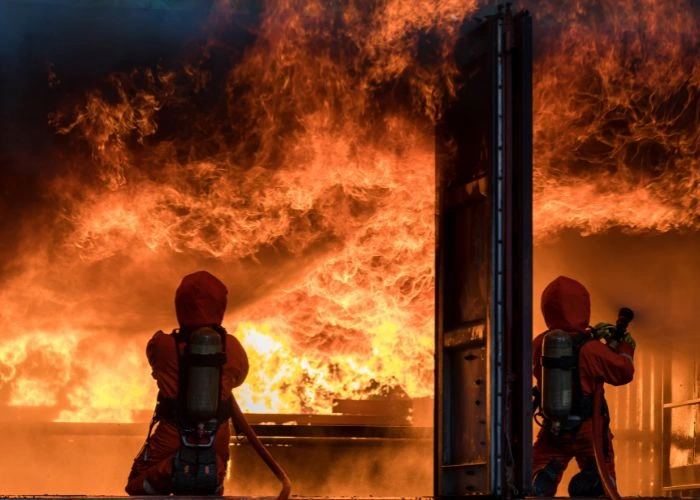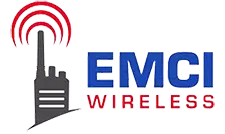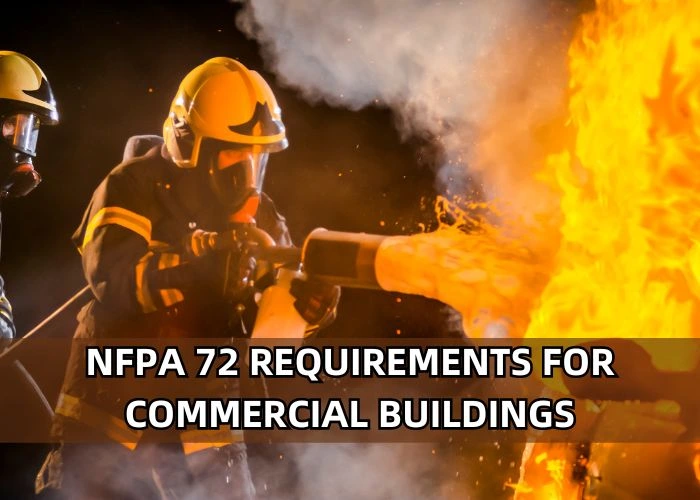In commercial construction and building management, safety is a must. Ensuring that your building complies with all necessary codes and regulations is not only essential for the protection of occupants but also for meeting legal requirements.
One non-negotiable aspect of building safety is emergency communication, and the National Fire Protection Association (NFPA) 72 plays a key role in this area. In this blog, we will explore the significance of NFPA 72 and its impact on your commercial building. We will also discuss the importance of Bi-Directional Amplifiers (BDAs) in maintaining effective emergency communications, and review the latest Florida fire code updates.
Understanding NFPA 72
NFPA 72, officially titled “National Fire Alarm and Signaling Code,” covers various aspects related to fire alarm systems, emergency communications systems (ECS), and more. This code addresses the application, installation, location, performance, inspection, testing, and maintenance of various safety systems within commercial buildings. It is important to note that federal, state, and local municipalities across the U.S. have adopted NFPA 72 as a standard for enforcing fire code regulations.
After thorough reviews and amendments, municipalities often customize the code based on their specific needs and requirements. NFPA 72 has been designed to offer the most up-to-date safety measures to align with the changing needs of society as far as fire detection, signaling, and emergency communications. In addition to fire alarm systems, it also includes provisions for mass notification systems, which are crucial for weather emergencies, terrorist events, and other threats.
The Role of NFPA 72 in Building Occupancy
As a general contractor, project manager, or building owner, it is essential to know that many jurisdictions now require compliance with NFPA 72 or similar codes as a prerequisite for obtaining an occupancy permit. This means that your building must have reliable in-building public safety radio communications coverage that adheres to the most current version of the Florida Fire Prevention Code, which references NFPA requirements.
EMCI Wireless offers a comprehensive solution to ensure that your building complies with these new requirements. We understand that compliance with NFPA 72 and similar codes can be complex and varies by jurisdiction. Here’s how EMCI can assist you in preparing and complying with these fire codes:
- Regulatory Reports: We research local fire codes, assess jurisdictional public safety radio network specifications, and collaborate with local authorities to determine the impact of NFPA 1221 and IFC 510 enforcement on your project, whether it’s new construction, additions, existing structures, or retro enforcement.
- Building Plan Reviews: EMCI evaluates your building plans to determine if a Public Safety Distributed Antenna System (DAS) will be necessary for achieving acceptable indoor RF signal coverage. Our recommendations are based on various factors, including site location, proximity to radio towers, building orientation, etc.
- RF Site Surveys: Our skilled professionals perform baseline RF site surveys to gauge and chart indoor RF signal coverage without amplification. Should your building exhibit satisfactory signal coverage, we can proceed with certification and furnish the required documentation. However, we will advise implementing a signal enhancement solution if coverage is insufficient.
- Distributed Antenna System Installation: EMCI engineers, designs, installs, commissions, and certifies Public Safety DAS systems that meet NFPA 1221 and IFC 510 requirements. We ensure grid testing on each floor to confirm acceptable signal coverage throughout the facility.
- AHJ Acceptance Testing: We facilitate inspections and Acceptance Testing by the Authority Having Jurisdiction (AHJ), a critical step for obtaining Certification of Occupancy. We provide a DAS Certification/Letter of Compliance along with system submittals.

NFPA 72 and IFC Requirements
It’s essential to understand the key requirements set by NFPA 72 and IFC when it comes to public safety communications in your building:
- Wireless Coverage: NFPA mandates that 99% coverage is required in areas of vital importance, as designated by the local fire department. In other areas, 90% coverage is necessary.
- Equipment Enclosures: All public safety network equipment must be housed in NEMA-4-compliant enclosures.
- Minimum Signal Strength: A minimum signal strength of -95 dB is required for adequate coverage.
- Battery Backup: Equipment supporting the public safety radio system must function for 24 hours on a backup battery.
- Antenna Isolation: Antenna isolation must be 15 dB higher than the amplifier’s gain.
- Fire Ratings: Cables connecting public safety electronic equipment must have a two-hour fire rating, including the room housing the equipment.
Whether your building is new or existing, a DAS or BDA design can be tailored to meet compliance requirements. EMCI offers a comprehensive DAS design package, including heat maps, floor plans, equipment lists, network system design, CAD exports, and sealed drawings for permitting.
The Latest Florida Fire Code Update
On June 26th, Florida Governor DeSantis signed Florida HB 1575 (2023), once again updating Florida rules governing ERCES in the state. Following are Key Elements of the Current Florida ERCES Requirements (as of July 1, 2023).
Florida Fire Prevention Code (FFPC) requires codes and standards-compliant public safety communication coverage inside buildings (new and existing). Florida Statutes provide additional requirements and processes to what is codified in FFPC. FFPC specifies signal strength, quality, and percentage of general and critical areas covered. The systems typically used to enhance in-building coverage are called Emergency Communication Enhancement Systems (ERCES), or as they are referred to in the statutes, two-way radio communication enhancement system.
Key Elements:
- FFPC requires coverage in new and existing buildings, except for the following exceptions which either have no requirement or where temporary exemption is granted:
- Extension: Existing High-Rise buildings (Commercial and Residential) have an exemption until Jan 1, 2025, but if a system is needed must apply for permits by Jan 1, 2024. (No exemption for new buildings).
- Exempt: Apartment buildings 75 feet or less in height that are constructed using wood framing, provided that the building has less than 150 dwelling units and that all dwelling units discharge to the exterior or to a corridor that leads directly to an exit.
- Exempt: Apartments and transient public lodging establishments that are less than three stories and that have direct access from the apartment or guest area to an exterior means of egress.
- Exempt: One and two-family dwellings and townhouses.
- Exempt: Buildings of less than 12,000 total gross square feet with no underground areas.
- Prohibits the Authority Having Jurisdiction (AHJ) from withholding a Temporary Certificate of Occupancy (TCO) solely on the need for an ERCES.
- If a building has inadequate coverage, the building owner must get a contractor with an appropriate
Florida license to submit an ERCES design, and system must be installed within 12-months of TCO issuance. - Limits the frequency that an assessment of radio coverage is required for buildings:
not more frequently than once every 3 years for existing high-rise buildings and existing buildings over 12,000 total gross square feet, and once every 5 years for all other existing buildings, unless:- Such building undergoes Level III building alteration or rehabilitation as defined in the Florida Building Code;
- Such building undergoes reconstruction as determined by the Florida Fire Prevention Code;
- A public safety agency reports to the local authority having jurisdiction that the agency’s communication devices failed to function correctly inside a building due to poor signal coverage; or
- A building is determined to be an imminent life safety threat to first responders.
- Such building undergoes Level III building alteration or rehabilitation as defined in the Florida Building Code;
- Consent of the FCC license holder (jurisdiction’s radio system operator) is required for the installation or modification of any system.
- If a local authority having jurisdiction modifies its public safety emergency communication system such that modifications to existing two-way radio communication enhancement system installations are required, the local authority having jurisdiction must give owners of the existing two-way radio communication enhancement systems at least 180 days’ notice before requiring any modification.
- If a modification is required per the above, building owner has 1 year to complete the retrofit starting from the date of a notice of violation for non-compliant coverage.
- If signal strength or DAQ is inadequate at the exterior of the building, an enhancement system is not required
- Local AHJ may not enforce requirements that are more stringent than those specified in the Florida Fire Prevention Code with respect to the requirement for, design of, or installation of a two-way radio communication enhancement systems.

Why Choose EMCI Wireless
EMCI Wireless, with over 40 years of experience, is a trusted partner in mission-critical Public Safety and commercial wireless communications networks. As a certified Motorola Solutions Service Specialist, we have the expertise and resources to ensure your building’s ERCES compliance with safety codes. We are committed to building strong relationships with our customers and industry partners, providing efficient and cost-effective solutions.
Building safety and compliance with fire codes are non-negotiable. NFPA 72 and related regulations set the standards for emergency communications in commercial buildings, and it’s crucial to meet these requirements. EMCI Wireless is your go-to partner for navigating the complexities of compliance, ensuring the safety of your building’s occupants, and providing efficient solutions for emergency communications. Contact EMCI today to schedule a site walk, and to find out how we can help you meet these essential requirements and make your building safer for everyone.
Are you looking to ensure your commercial building complies with NFPA 72 and other safety codes? Contact EMCI Wireless, the leading Motorola Solutions Channel Partner for Central and South Florida, for expert guidance in commercial and public safety communication solutions. Your building’s safety is our priority.




